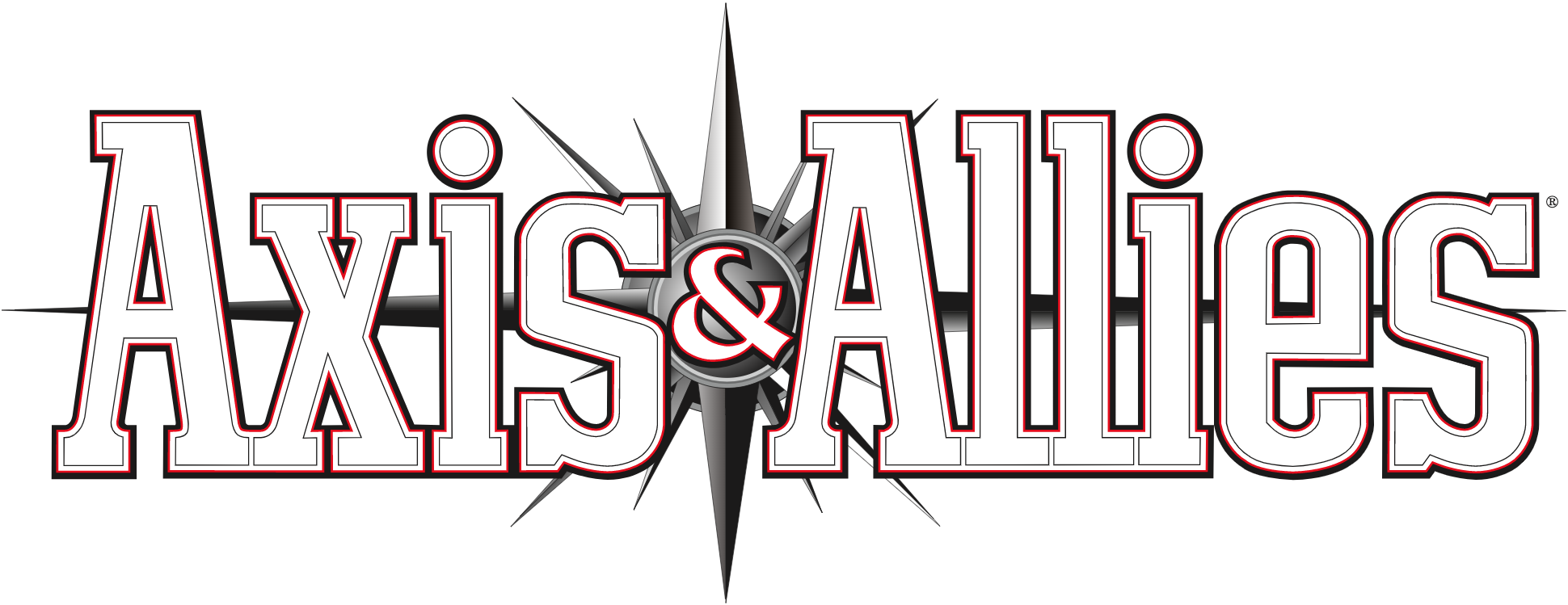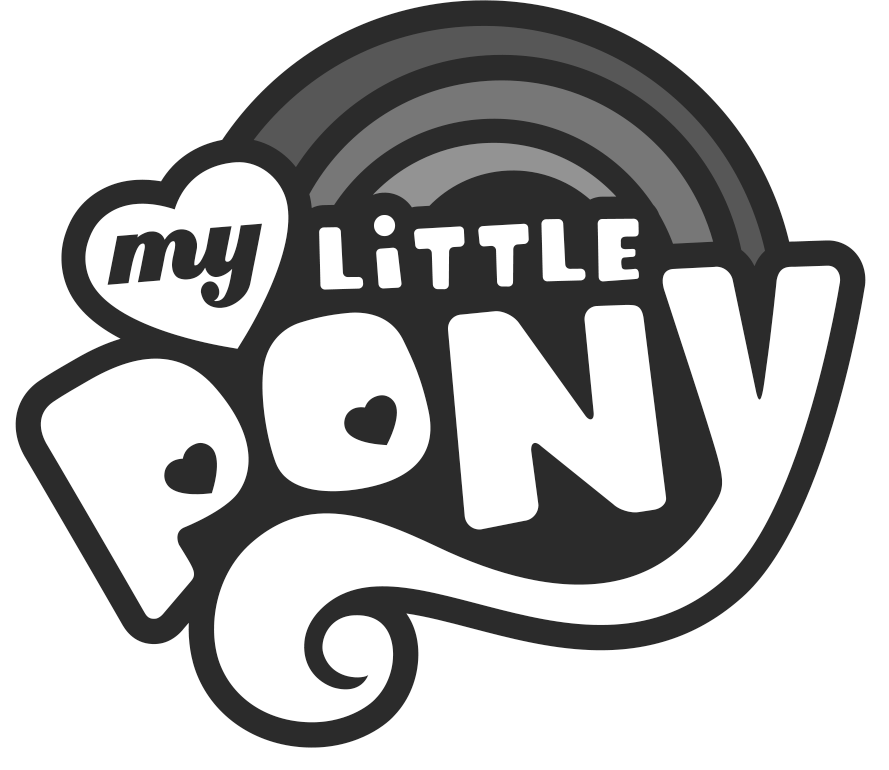This is the Power Rangers Roleplaying Game Living FAQ. This page will be updated with new questions and rule clarifications as needed. This page will always have the most up to date FAQ available.
Living FAQ Version 1.0
Essence Points, Skills, and Health
How many Essence Points should I have at Level 1?
At Level 1, all player characters have 16 Essence Points total. Your Origin gives you 1 Essence Ability Increase (usually a choice between two options), and your Role gives you 3 more. These four Essence Points are the only ones determined by your character creation choices and come with related Skill Rank options.
In addition to these four, all player characters also receive 12 Essence Points to assign however you choose. We recommend a “spread” of 4, 3, 3, 2 to assign to your Strength, Speed, Smarts, and Social, in any order, but you may assign them in any amounts. Remember that as you assign these Essence Points, you must choose Skill Ranks in the related Essence to round out your character!
How do I choose a Specialization for my Skill?
A character may take Specialization in any Skill they possess at the d2 level or higher by spending a Skill Rank, filling the bubble on one of the lines under the related Skill, and filling in the specific Specialization chosen. The Core Rulebook provides a list of suggested Specializations that come up most often in Power Rangers gameplay, but you are not limited to just those! Feel free to discuss with the Game Master what Specialization you feel your character may have, given their background or experience in game as they level.
For example, the Core Rulebook lists sample Specializations for the Infiltration Skill as Burglary, Sleight of Hand, Shadowing, and Stealth, but perhaps your character is an actor. While you may have the Performance Skill under the Social Essence, taking a Specialization in Mimicry or Disguise under Infiltration makes a lot of sense for a character with acting skills! As long as your GM agrees, these types of choices are completely acceptable as unique Specializations.
How do I get additional Health?
Additional Health comes from the Conditioning Skill. Each time you put a Skill Rank in Conditioning, increase your Health by one point.
How do I know where to assign Skill Ranks?
Skill Ranks are assigned by using the number of Essence Score points in each Essence category: Strength, Speed, Smarts, and Social. The number of Skill Ranks assigned under each Essence should match the Essence Score, unless you have a specific Perk that allows you to change where you may assign your Skills.
When gaining Skills, the book states that any time you gain an Essence Point, you get a Skill Rank associated with that Essence. Does that include Origin and Role? For example, does the Pink Ranger get 2 Skills in Speed and 1 in Social on top of the +1 Targeting, +1 Finesse, and +1 Persuasion?
The Skill Ranks you choose for Origin and Role are from the ones listed in each Origin and Role, and you still only receive 1 Skill Rank per respective Essence increase.
From the above example, the Targeting and Finesse Skills are given to the Pink Ranger as the 2 Skills for the Speed Essence increase mentioned, and the Persuasion is given as the Skill for the Social Essence increase.
What does ‘Base Die’ mean on Table 6-2: Sliding Dice Shift (page 88)?
The term ‘Base Die’ is the reference point for ‘Single d20’ in the defining information for that table. This is also true on Table 10-3 on page 168.
Origins
How does the Origin Essence Ability Increase and Bonus Skill Levels work? Do I get all of the Skills listed or just a selection?
Every time a player increases an Essence Score (Strength, Speed, Smarts, or Social), they will increase a Skill Rank tied to that Essence. In the case of the Essence Ability Increase that is given with your Origin Choice, your Skill Rank is increased in one of the listed Skills for that Origin.
To clarify, you should not add all of the Skills listed. The list is only the selection of Skills from which you choose to take. Remember, the Skill Rank you increase must match the Essence that was raised.
QUICK TIP: You can always check to see if you have the correct number of Skill Ranks under each Essence Score by counting the bubbles filled in on your character sheet! Unless you have a specific Perk or other rare circumstance that affects your Skill selection, the number of bubbles will always match the Essence Score!
In the character creation guidelines, it lists choosing your Origin first. However, all Origins state that if you have that Skill, you may either increase the Skill Rank or take a Specialization. If the Origin is the first thing you're meant to do, where could you possibly get those skills from?
The order in which you perform your steps of character creation is really up to you, but for Power Rangers, we’ve suggested this as the easiest way to decide how you want your character to be. Some players go through the whole choosing process before ever even popping in a single Skill Rank, while others go step-by-step. It is up to you!
Remember that in addition to the Origin and Role defined Essence increase (and therefore Skill Ranks) that you receive, you will also receive 12 Essence Points to distribute across your Essence Scores that will result in Skill Rank increases or Specializations. Some people like to choose those first, but some like to see what their Origin and Role choices will give them before deciding. Either way, nothing is ever locked in stone, and you can adjust your choices until you’ve created your perfect character!
Roles
I want to make a character with the Black Ranger Role, but I want my character to look like a Green Ranger. How can I do this?
The Roles in the Power Rangers Roleplaying game are tied to the spectrum and reflect archetypes often seen throughout the history of Power Rangers. All of the Roles have a unique Energy Color that is also used in certain Powers or Weapon effects based on that color. A chart of what each color in the base Ranger Spectrum can be found in the Power Rangers Roleplaying Game Core Rulebook on Page 29.
Many players will choose a Role based on a combination of what color they want to present and some of the unique Perks and other abilities it grants them, using their 12 additional Essence Points spread to “bump up” the specific Essence Scores they wish to create the perfect character in their minds. Because of the flexibility of Essence Score distribution, this is pretty easy to accomplish and still have your Power Armor match your chosen Role.
That being said, exceptions exist and are fun! The Roles present mechanical choices only, and because this is your unique Power Rangers character that you are building, what type of suit, its color, and all aesthetic design choices are completely up to you, regardless of what Role you choose. We’ve already seen some amazing fan character builds and artwork with multi-colored suits, brand new colors, fun patterns, and more, and we can’t wait to see yours!
Weapons
Certain Weapons in the chart have Traits like “Sniper” or “Martial Arts.” What do those mean?
When a Weapon has a Trait, it means it has additional effects or abilities inherent in the weapon that affect mechanics. Usually, a Trait will explain how a Weapon can be used, and a list of what each Trait does can be found in the Power Rangers Roleplaying Game Core Ruleboook on Page 106.
However, a secondary way that Traits may be applied is if your character is Specialized in a Skill that is related to the Trait. For example, a Power Bow with the Sniper Trait can be used with Specialization by a character who has taken “Sniper” as a Specialization under their Targeting Skill (see Specialization rules in the Power Rangers Roleplaying Game Core Ruleboook on Page 79).
Additionally, other game elements like General or Role Perks, Grid Powers, and more might specifically call for the use of a “Power Weapon”, “Sniper Weapon”, etc. that will not function unless being used with a Weapon that bears that Trait.
I want my character to have a specific Weapon that doesn’t appear on the chart in the Core Rulebook. What do I do?
Because there are so many seasons of Power Rangers material to draw from, we want you to be able to make any sort of character with any types of weapons you choose. The Power Rangers Roleplaying Game Core Rulebook Page 108 has a nice array of template weapons that draw inspiration from MMPR, but we will have even more coming in future supplements which are already developed that this section sets up for. For now, you can use the Weapon types in the chart as a template to make whatever you need to suit your character vision. For example, if you want to have a Ranged Power Weapon that looks and acts like a Laser Lamp, you could work with your GM to modify the Satelline Stunner on the Weapons Chart, giving it a Laser trait and Laser Damage instead of Energy Damage. We may include official stats for a Laser Lamp in a future book, but you’ll have somewhere to start for your character now!
Many Ranged Weapons list two ranges, such as 30/90 ft. What does this mean?
The first number in this listing is the normal range for the weapon to hit. When attacking a target within the range of the first number, roll normally to attack.
The second number in this listing is the “long range” for the weapon to hit. It is possible for the projectile to hit within this range, but the roll must be made with a Snag, as it is more difficult of a shot due to the distance.
Note: If you are already rolling with a Snag to obtain an Alternate Effect for your Damage, there is no “double Snag” penalty. Neither Snags nor Edges stack, and you only have the one instance on your roll.
The Weapon I am looking at is listed as a “Melee Weapon.” Does it use Might or Finesse?
Unless a Weapon specifically lists Might or Finesse as its associated Skill, Melee Weapons may use either. This is also the case for unarmed combat attacks, with “Brawl” as the name for the Might Attack and “Strike” as the name for the Finesse Attack.
What does “Light” mean as a Weapon Trait?
A Light Weapon is a quickly accessible one-handed weapon. Often, Light Weapons are designed to be wielded in pairs, like fighting knives, sai, power daggers, or bagh nahk. Many small dueling weapons are Light Weapons.
A Sidearm is also considered a Light Weapon. Power Rangers Blade Blasters are an example of this.
A pair of light weapons can be drawn as a free action. Additionally, a character armed with two light weapons can always gain the Multiple Attacks (2) trait by attacking with a ↓1 dice shift.
What does “Versatile” mean as a Weapon Trait?
A Versatile Weapon has two methods of being wielded. While this is most commonly arranged as being both one-handed and two-handed, there are some instances that combine one-handed melee and two-handed ranged, two-handed melee and paired light, and more.
The Effects (generally Damage) or Versatile Weapon almost always changes depending on how the weapon is wielded. For example,in the Power Rangers Roleplaying Game Core Rulebook Page 108-109, the Power Sword is listed as having “1 or 2 Hands.” When wielding the Power Sword with one hand, it does 1 Sharp Damage, but under the Alternate Effect, it states that wielding the Power Sword with two hands allows it to do 2 Sharp Damage.
What does “Computerized” mean as a Weapon Trait?
Any piece of Equipment, including Weapons, that have the Computerized Trait works just like other Traits as a descriptor for the Weapon that have other effects when outside factors affect it.
For example, a Weapon that is “Computerized'' may be used with Specialization by anyone who takes the Computerized Specialization, just like they would “Martial Arts.”
Additionally, there may be Effects that occur in-game that apply to Equipment that is Computerized. For example, if a Threat sets off an EMP, and your Computerized Weapon is in the blast area, it will be affected (and may not work anymore)!
Under Equipment, various sizes of Weapons have different action requirements for drawing them, including specific sections for Power Weapons, but the “It’s Morphin Time” Perk says that Rangers can summon their Power Weapons to their hands as a Free action. Which is correct?
The ability to summon a Ranger's Power Weapon to their hands from "It's Morphin Time!" supersedes the normal requirement to spend other actions with larger weapons if the Power Ranger is Morphed. The Power Weapon the Ranger can manifest as per their Role is always a Free action, but anything else they want to Draw (perhaps based on the scene or situation), would rely on the normal actions listed in the Power Rangers Roleplaying Game Core Rulebook Page 106.
For example, if your character finds a non-Power Weapon or one that isn’t given to them as part of their Role (or hasn’t been made for them through the normal requisition process), they may still wield it, but they must find a place to store it and use the action type listed in order to draw it.
On the Weapons Table, the Power Bow lists a Finesse d4 prerequisite, but the Power Bow uses the Targeting Skill. Is this prerequisite correct?
This prerequisite was an error in printing, and this will appear in the Errata. There is no prerequisite for the Power Bow!
There is a specific Weapon from Power Rangers canon that I want to use, but it isn’t in the Core Rulebook! What should I do?
With dozens of seasons, it wasn’t feasible to include every Weapon or piece of Equipment in the Core Rulebook, but don’t worry! We have a ton planned for future books that will have new choices covered!
For now, use the Weapons Table as a guideline for the type of Weapon that you want your Ranger to wield and what type of Damage it does. The shape and look of the Weapons listed don’t matter – the type of Damage and what Skill is necessary for its Attack is what counts! Work with your GM to use these templates to craft the Weapon you envision to make sure that it is neither over nor under powered, and you’ll be set for your next mission!
Some Weapons, including unarmed combat, deal Stun Damage. How does Stun Damage harm an enemy?
Successfully hitting a target with a Stun weapon means the target is denied their Move action for the listed number of turns (however much the Stun Damage is). If the listed number of rounds equals or exceeds the number of Health the target has left, they fall unconscious, Defeated. More information on Stun Damage and other types of Damage that incorporate Stun can be found in the Power Rangers Roleplaying Game Core Rulebook on Page 107.
The Star Slinger lists that it does 1 Damage per 2 hits. Does this mean that it does 1 Damage every other turn (if both attacks hit) or does the fact that it fires 4 pellets per attack mean that when attacking with it, you roll to attack 4 times and do damage accordingly?
The Star Slinger allows a player to make 4 rolls with its one Standard attack action, inflicting 1 Damage per 2 hits. So, you could try to do 1 Damage to 2 different targets (if you hit either one both times), 2 Damage to 1 target (if you hit all four times), or maybe hit up to 4 targets for no damage, but maybe break a window, hit a button, or annoy a Cog.
Armor
If a Ranger is qualified in Light and Medium armor, do we combine the bonuses or just choose one?
You should choose one that your Ranger qualifies for -- Light is listed along with Medium because it is the pre-qualification for the stronger armor, so your Ranger will always be qualified for both (or anything less than whatever you are currently qualified for).
So, if you take a Perk that allows you to take Heavy armor, your Ranger can ALSO wear Medium or Light, if need be. You'll almost always want to take the best armor you can, unless you have some other Perk or Power that says that armor can't be used with it (yes, foreshadowing!).
Also, there may be instances where your character has the opportunity to don non-Power Suit armor, and these qualifications will still apply. Unless stated otherwise or allowed by your GM, you only ever benefit from the highest armor bonus you are currently wearing.
Combat
What dice do I roll when making an Attack?
Depending on the Weapon that you use for an attack, there will be a specified Skill that is listed for that Weapon. Roll the die type listed as your Skill Rank on your character sheet (your Skill Die) and add it to your d20 roll to get a combined total for your Attack. Remember that your punches, kicks, and other unarmed combat also count as weapons, and you may use Might or Finesse as the Skills for those rolls.
If the Weapon you are using relates to a Specialization that you have in your Skills, then you roll the die type listed as your Skill Rank and every other die type “below” it. These are all considered your Skill Dice for the roll. For example, if you have a d8 in Targeting, but you have a Specialization in Archery and want to shoot with a bow, you roll the d8, d6, d4, and d2. Take the highest number from these dice and add it to your d20 to get a combined total for your Attack.
How do I “crit” on my rolls?
Any time you make a successful Skill Test, whether in combat or just performing a regular skill, if any of your Skill Dice (except for the d2) show the highest number for that die type, the roll is a Critical Success. The d20 does not count as a Skill Die, but rolling a 20 will often mean the Skill Test is successful, which is the most important part!
A Critical Success in an Attack roll will most often result in doubling the Attack’s effect, but some weapons have alternate Critical Effects that may be chosen instead.
Do Attack Perks and other abilities stack? For example, does the Yellow Ranger’s “Triple Strike Attack” stack with the Extra Attack Role Perk gained at Level 5?
Yes! Of course, you must spend a Power Point to activate the Triple Strike Attack, and those may eventually run out, but until they do, those Perks (and others) absoluately stack.
Always remember to check the prerequisites and situational requirements when using Perks. For example, the Triple Strike Attack only works with Finesse Attacks, but when making those, the stack applies.
How many seconds are in a Combat round? I saw that on page 157 it says “5 seconds” but everywhere else in the book it says “6 seconds.”
Unfortunately, the “5 seconds” on page 157 is a typo, which will be corrected in future printings of the book. The correct answer is 6 seconds, making 10 rounds a full minute of in-game time.
Zords
Why don't the Example Zords in the Core Rulebook match up with the starting Zord statistics that player use to create their own Zords?
As stated on page 140, the example Zords are existing Zords in canon and pre-made for easy use. They have been 'leveled up', and some could be receiving benefits from their Ranger pilots or other factors in order to match what they represent from their source media. Think of them as big, robotic NPCs that GMs can use quickly, if they want to.
Why not fight Grown Monsters on Foot instead of in Zords for the better Action Economy?
As the roster of Threats grows and the Threat Levels (TL) become more akin to what we see in the shows, these Grown monsters will be attacking multiple times, inflicting 3+ damage per strike, hitting large areas of effect, and more. To keep the feel and flavor of Power Rangers, this is a team-based game where the Power Rangers involved are not simply going to "be okay" with one or more of their members getting stomped (or lazed, or eaten, or slimed) flat each round. Yes, they are harder targets, and it is easier to hit a Grown monster when you are small, but the Defenses and Damage output (plus unique special effects) grows along with them. Considering a Ranger on foot has an average maximum Health of 8; a single hit from something like a Dragonzord-equivalent can Defeat almost any Ranger. Calling the Zords allows for new levels of Damage, never rolling with Snag because of their Zords Role Perk (and the Driving skill), and having at least 6 more Health to buffer from the heavy hits that are possible.
One thing to remember is that most of the Threats in the Core Rulebook are designed at a lower TL to be a challenge to low Role level teams, but even in the show they were all defeated relatively quickly - at which point either Rita would often “Make Her Monster Grow” or another incarnation of the Threat would appear in some way, which opens up a whole new bank of Health, new rules, higher damage, and more. Without a chance to rest or regenerate Power Points, the characters will fare much better in their Zords, just like in Power Rangers!
Why does Megazord Damage round up to all combined Zords?
The combat system in Essence20 is designed to be more cinematic and fast/fun than gritty and realistic. In the show, the combats between Monsters and Megaforms were short, explosive, and normally consisted of 2 to 3 swings on both sides before the Megaform calls on an attack to finish the enemy off.
The Essence20 damage division system keeps these Combat scenes shorter, more exciting, and less of a dice-rolling grind that takes multiple hours to whittle down a Threat’s Health. Megazords also have access to truly titanic attacks that frequently inflict 6+ damage on a single hit. Some have much more (Dragonzord... I'm looking at you)!
Yes, a single Damage from an attack on a Megazord being split and round up to five instances of 1 seems kind of anti-Megaform, but considering someone's attack would have to do 6 or more Damage in order to divide out to ever more than 1, a Megaform whose parts all have the basic 6 Health would have to suffer 6 of these 1-round-up attacks, which would all have to hit, before they are actually defeating any of the individual Zords. If a Grown Monster targets an individual Zord with that same 6+ damage attack, the Zord would be Defeated. If a 5-Zord Megaform is hit by the Damage 6, they all only take 2 damage. The same thing happens if they get hit with both of the Damage 3 attacks; 2 damage each.
This quick and heroic combat system has a goal of putting together a fun combat that reflects the scenes we see in Power Rangers, giving players a fun few rounds of fighting without a long slog, making them faster, more cinematic, and still fun to witness giant critters being bopped by giant robots. Which, at the end of the day, is what we all want to see!
If a Ranger uses their Driving skill to attack in a Zord, why do some Zords have Might and Targeting skills?
When the Zord is fighting on its own (without a pilot, as they can but rarely do), it uses its own Might and Targeting skills.
Additionally, if a Zord is piloting itself, it initially uses its own Driving (Autopilot) skill for all of its Attacks, as that it is technically serving as its own Driver. Once you start adding in levels and bonuses, if it learns Might and/or Targeting, it will start to use those skills if they get higher than its skill in Driving (Autopilot).
The ‘Dragon Megazord’ entry on page 145 seems off for what it represents; what should it actually be?
This entry was mistakenly named after a different Megaform. It should actually be titled ‘The Mega Dragonzord’, and should have the Health listing of (22/16/7/7/7/7).
Threats
I don’t see certain Skills listed on the Threats. Does that mean the Threat has to roll with a Snag?
Yes! Just like player characters, Threats have Skill Ranks. If a Skill is not listed in their statblock, they may attempt the Skill Test, but they (or rather, the GM rolling for them) must make the Skill Test at a Snag, taking the lower of the 2d20s as their score.
Some of the pregenerated Threats don’t seem to have the number of Skill Ranks equal to their Essence Scores. Is this correct?
Because Power Rangers monsters have other magical or alien Powers that overshadow their normal Skills, sometimes the pre-generated Threats will not follow the basic character creation rules that player characters and others do. This is done on purpose to create a balanced opponent at the designated Threat Level that emulates what we see in their respective media source materials. When creating your own Threats, however, we have a basic formula to follow as guidance:
Threat Level 0 creatures have 6 Essence Points to assign to their four Essence scores. For every additional Threat Level, add 2 Essence Points. So a Threat Level 10 creature has 26 Essence Points to spend. Put another way:
Threat Level x2 + 6 = Essence Points
Just like when you’re creating a player character, every Essence Point you spend on an Essence Score gives the Threat a Skill Point to invest in the Skills tied to that Essence.
Perks and Powers
How do I regenerate Personal Power?
Your character automatically regains the amount of the Personal Power Regeneration for their Role per day, once they sleep for 6 hours.
Additionally, your team may choose to spend one Story Point (see Story Points rules in the Power Rangers Roleplaying Game Core Rulebook on page 91) per team member to regenerate 1d2 Personal Power for each team member in the scene. There are also abilities that your teammates may have (such as the Black Ranger’s “One For All” Role Perk at Level 11 that will generate Personal Power for others.
New ways to regenerate Personal Power will appear in adventures, sourcebooks, and other publications as well. Ultimately, the generosity of the Morphin Grid and its Power is also up to the GM, and could make for great momentary awards for Critical Successes, epic moments, or narrative elements, too.
The Power increase levels in the description of the Roles don’t match the table for the Role. For example, the Blue Ranger says "Personal Power Capacity: +2 Every 4 Levels,” but the table says to increase at different intervals (starting at 1, then 4, 7, 11…). Which is correct?
Use the table for the most correct information for each Role, as not every Role levels at exact repeated intervals, and this was worded incorrectly. This will be corrected in the Errata and for future printings.
How do I take the Spectrum Shift Perk at Level 1?
You may choose the Spectrum Shift Perk at Level 1 by choosing either Curious, Oddball, or Rebellious as your Origin. These Origins grant you the ability to take any General Perk that you meet the prerequisites for, and Spectrum Shift doesn’t have any. While the Advanced Spectrum Roles and the Spectrum Shift Perk are designed for characters to evolve into new Roles as they General Perks at higher level, this is the best way to begin with an Advanced Spectrum Role at Level 1. Additional Origins with a General Perk as a benefit will appear in future supplements as well, opening even more options to create characters with an Advanced Spectrum Role at Level 1.
If you want to choose a different Origin for your character and still take an Advanced Spectrum Role, you may do so at Level 4 or whenever you soonest gain a General Perk. Don’t worry, your character will level up quickly, and they will gain a great roleplaying backstory of their metamorphosis into a new Role!
Conditions
How do characters remove the Unconscious Condition?
Another character can spend a Standard action while in contact with the Unconscious character to rouse them, removing the condition at the beginning of the following combat round.
If the Unconscious character was knocked out of their Morphed form as a result of being Defeated, they awaken in their normal clothes with 1 Health.
Customer Service
How can I download a copy of the PDF?
Purchase the PDF by adding it to your cart and checking out as usual. Follow the steps below to download the copy:
- Log into your account on the website or access it through the "check your order" link in the confirmation email
- Click on the order number and an itemized list will appear.
- Click the small blue arrow next to the PDF on the list and then follow the onscreen directions to download your PDF!
Can I use regular role playing game dice?
Yes, you can use regular dice! While the Power Rangers Roleplaying Game Dice do match your Ranger colors, the game can be played with any dice set featuring the roleplaying staples of d4, d6, d8, d10, d12, and d20. For the d2, a coin can be flipped or you can just call even or odd on any other die.
The Power Rangers Role Playing Game Dice use lightning symbols to make it easier to see Critical Successes. If using regular dice, replace the highest number on each die with Critical Successes.
There are also a number of online or app-based die-rolling tools if you don't have access to existing dice, so don't let a lack of Power Rangers Roleplaying Game Dice keep you from enjoying the game!
When will all the additional Power Rangers Role Playing Game accessories be available?
We have a full line-up of releases planned. Be sure to subscribe to our newsletters and keep an eye on Renegade Con for announcements.
For the most up-to-date release dates, check out our release dates page! Shipping times have been unpredictable this year and we update this page as quickly as possible to reflect any changes that occur. https://renegadegamestudios.com/releasedate
Do I need to purchase the game separately on Roll20 in order to play it on that platform??
The game on Roll20 is a separate product from the hardcover or PDF versions of the game. To create the game on Roll20, you will need a subscription and have purchased the Roll20 version of the game.
Do all the players in a Roll20 game need to purchase the game and a subscription to Roll20?
No! As long as the Game Creator has a subscription and has purchased the Roll20 version of the game, any players and/or guest GMs will have access to those features as well! You’ll be able to share perks with your whole table. Read more about it on the Roll20 Help Center.
How do I find other people to play with?
Online social communities are a great place to start looking for other players!
Check out our local store locator to see if there is a store near you carrying Renegade Games. Reach out to them for advice on local groups and to meet other players!
How many people can play?
The game is designed to be played by 2 or more players.
Can I play this game with my kids?
Sure! It is rated for kids and adults ages 13 and up on their own. It is possible for younger players to play with adult help. Cooperative games like Roleplaying are perfect for this type of team effort!
How long does it take to play?
That’s really up to you. A typical session can be anywhere from two to four hours. But it is possible to play any amount of time. Your adventures can be short and resolved in one or two sessions or you can play a long ongoing campaign that lasts for years!
Is there a How to Play video to help get me started?
Yes! We have many videos available for you, from Actual Plays to Character Creation. Follow this link for a variety of options.
Where do I find downloadable character, Zord, and Megazord sheets?
Check out all the free bonus content here: Power Rangers Roleplaying Game Free Bonus Content
Will the Power Rangers Roleplaying Game be in my native language?
Currently, the Power Rangers Roleplaying Game is only available in English but we work with partners worldwide to translate many of our projects into other languages. Stay tuned for any future announcements by signing up for our newsletter here.
What if I still have questions?
We know learning a whole new game system can be a daunting task so we encourage you to join us on Discord or on our Facebook Power Rangers Groups listed here:
If you have questions about an order or other questions are left unanswered, please reach out through our Customer Service Form here.













